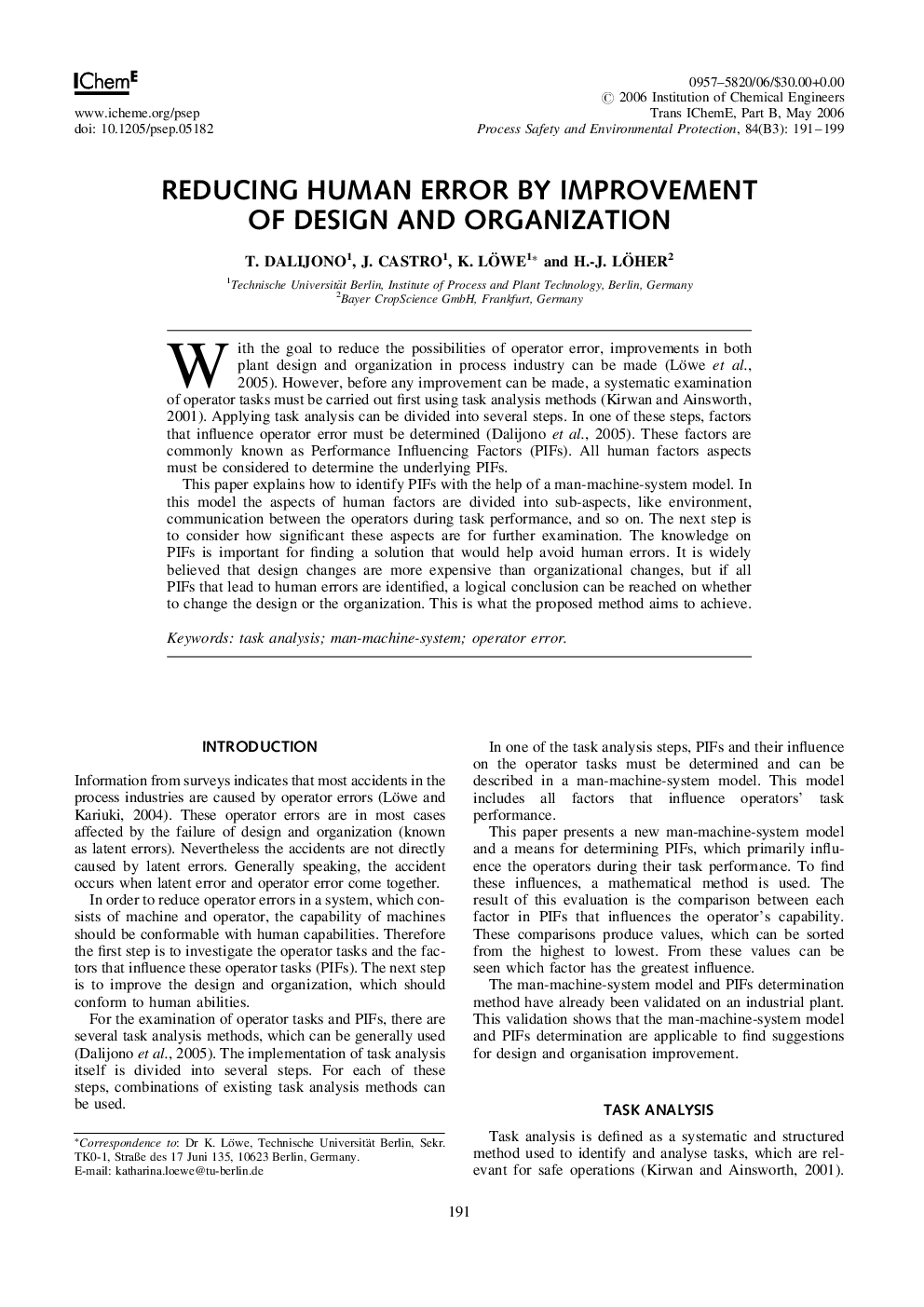| Article ID | Journal | Published Year | Pages | File Type |
|---|---|---|---|---|
| 588912 | Process Safety and Environmental Protection | 2006 | 9 Pages |
With the goal to reduce the possibilities of operator error, improvements in both plant design and organization in process industry can be made (Löwe et al., 2005). However, before any improvement can be made, a systematic examination of operator tasks must be carried out first using task analysis methods (Kirwan and Ainsworth, 2001). Applying task analysis can be divided into several steps. In one of these steps, factors that influence operator error must be determined (Dalijono et al., 2005). These factors are commonly known as Performance Influencing Factors (PIFs). All human factors aspects must be considered to determine the underlying PIFs.This paper explains how to identify PIFs with the help of a man-machine-system model. In this model the aspects of human factors are divided into sub-aspects, like environment, communication between the operators during task performance, and so on. The next step is to consider how significant these aspects are for further examination. The knowledge on PIFs is important for finding a solution that would help avoid human errors. It is widely believed that design changes are more expensive than organizational changes, but if all PIFs that lead to human errors are identified, a logical conclusion can be reached on whether to change the design or the organization. This is what the proposed method aims to achieve.
